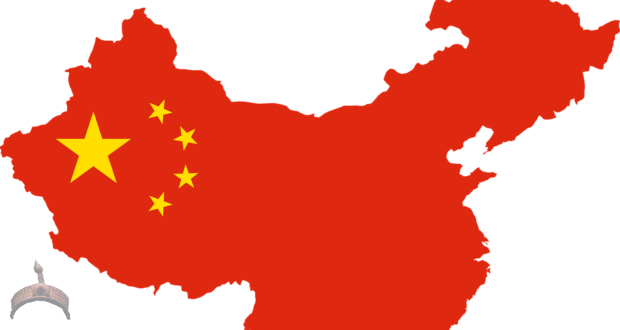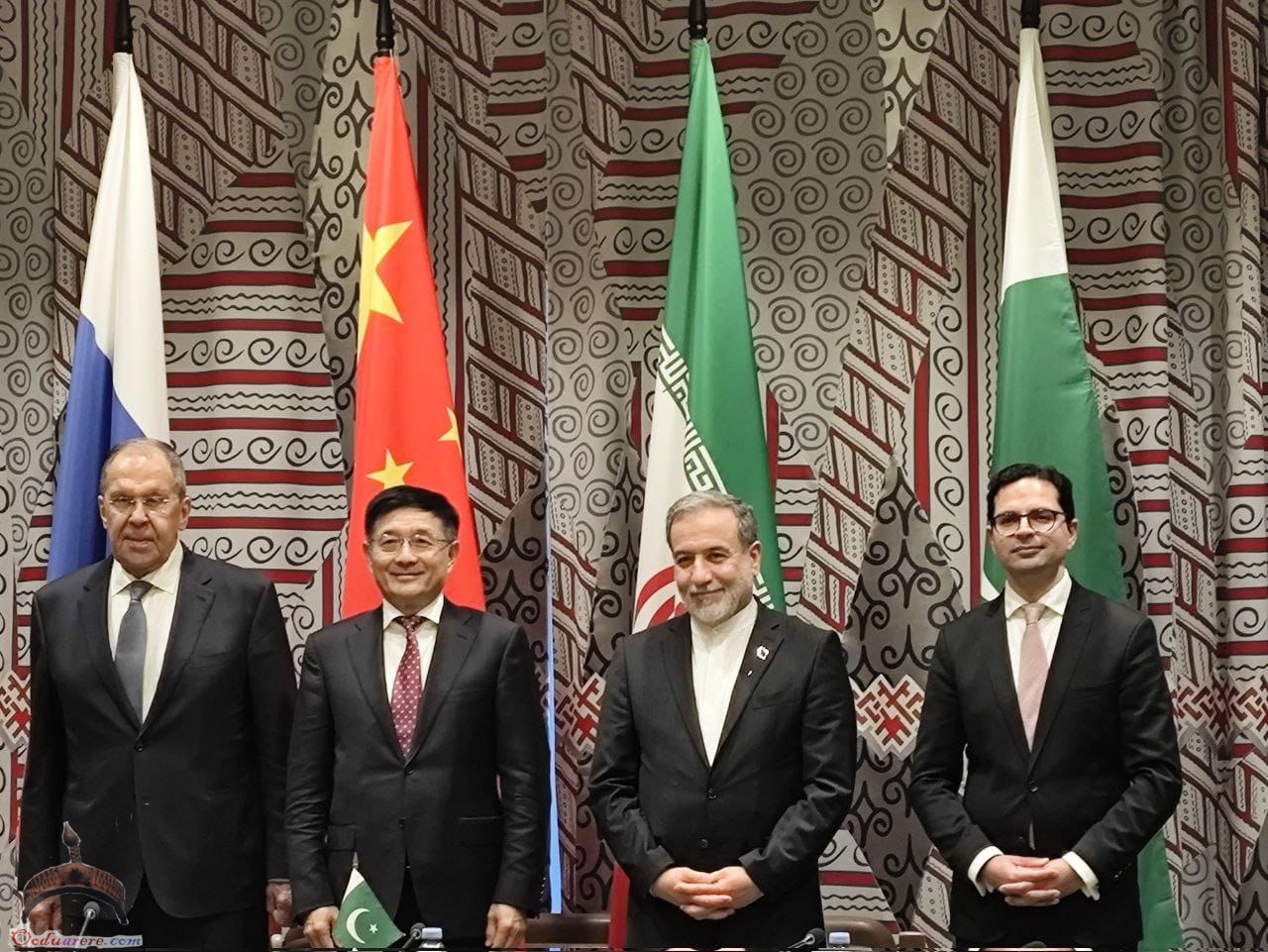by Pepe Escobar (cross-posted with the Asia Times by special agreement with the author)
The geopolitical focus of the still young 21st century spans the Indian Ocean from the Persian Gulf all the way to the South China Sea alongside the spectrum from Southwest Asia to Central Asia and China.
That happens to configure the prime playing ground, overland and maritime, of the New Silk Roads, or the Belt and Road Initiative (BRI).
The epicenter of global power shifting East is ruffling feathers in some US political circles – with a proliferation of parochial analyses ranging from Chinese “imperial overstretch” to Xi Jinping’s Chinese Dream provoking “nightmares.”
The basic argument is that Emperor Xi is aiming for a global power grab by mythologizing the New Silk Roads.
The BRI is certainly about China’s massive foreign exchange reserves; the building know-how; the excess capacity in steel, aluminum and concrete production; public and private financing partnerships; the internationalization of the yuan; and full connectivity of infrastructure and information flows.
Yet the BRI is not a matter of geopolitical control supported by military might; it’s about added geopolitical projection based on trade-and-investment connectivity.
The BRI is such a game-changer that Japan, India and the “Quad” (US, Japan, India, Australia) felt forced to come up with their own “alternative”, much-reduced mini-BRIs – whose collective rationale essentially lies in accusing the BRI of “revisionism” while emphasizing the need to fight against Chinese global domination.
The basis of the Trump administration’s Free and Open Indo-Pacific strategy, introduced in October 2017, was to define China as a hostile existential threat. The National Security Strategy (NSS) and the National Defense Strategy (NDS) amplified the threat to the level of a new doctrine.
The NSS states that “China and Russia challenge American power, influence, and interests, attempting to erode American security and prosperity.” The NSS accuses China and Russia of wanting “to shape a world antithetical to US values and interests.” It also accuses Beijing of “seek[ing] to displace the United States in the Indo-Pacific region” and of “expand[ing] its power at the expense of the sovereignty of others.”
The NDS states that Beijing “seeks Indo-Pacific regional hegemony in the near-term and displacement of the United States to achieve global preeminence in the future.”
That’s the new normal as far as multiple layers of the US industrial-military-surveillance-media complex are concerned. Dissent is simply not permitted.
Time to talk to Kublai Khan
“Revisionist” powers China and Russia are regarded as major double trouble when one delves into the direct link between the BRI and the Russia-led Eurasia Economic Union (EAEU). The EAEU is itself one step ahead of the Russia-China strategic partnership announced in 2012, crucially a year before Xi announced the BRI in Astana and then Jakarta.
At the BRI forum in Beijing in May 2017, Russian President Vladimir Putin solidified the notion of a “greater Eurasian partnership”.
The Russian “pivot to Asia” started even before Maidan in Kiev, the referendum in Crimea and subsequent Western sanctions. This was a work in progress along multiple sessions inside the Shanghai Cooperation Organization (SCO), the BRICS and the G-20.
Kazakhstan is the key link uniting BRI, EAEU and the SCO. Russia and Kazakhstan are part of one of the top overland connectivity corridors between East Asia and Europe – the other going through Iran and Turkey.
Xinjiang to Eastern Europe by rail, via Kazakhstan and Russia, now takes 14 days and soon will drop to 10. That’s a major boost to trade in high value-added merchandise – paving the way for future BRI high-speed rail able to compete head-on with low-cost maritime transport.
As for Moscow’s drive to be part of the BRI/EAEU economic connectivity, that’s only one vector of Russian foreign policy. Another one, as important, is enhanced German-Russian trade/investment relations, a priority also for German industrialists.
China for its part is now the top foreign investor in all five Central Asian “stans.” And it’s crucial to remember that Central Asia is configured not only by the five “stans” but also by Mongolia, Xinjiang and Afghanistan. Thus the SCO drive to solve the Afghan tragedy, with direct participation of major players China, Russia, India, Pakistan and Iran.
The BRI strategy of forging a pan-Eurasian connectivity/logistical grid naturally poses the question of how Beijing will manage such an open-ended project. The BRI is not even in its implementation phase, which officially starts next year.
It’s useful to compare the accusations of “revisionism” with Chinese history. When Marco Polo reached the Yuan court in the late 13th century he saw a multicultural empire thriving on trade.
It was the Silk Road trade routes and not the projection of military power that epitomized Pax Mongolica. The 21stcentury Pax Sinica is its digital version. Is Xi a new emperor or a post-modern version of Kublai Khan?
The Yuan dynasty did not “control” Persia, Russia or India. Persia, a superpower then, linked the Nile, Mesopotamia and the Indus with trade with China. During the Tang Dynasty in the 8th and 9th centuries China also had projected influence across Central Asia all the way to northeastern Iran.
And that explains why Iran, now, is such a key node of the BRI and why the leadership in Tehran wants the New Silk Roads solidified. A China-Russia-Iran alliance of – Eurasia integration – interests cannot but rattle Washington; after all, the Pentagon defines all those geopolitical actors as “threats.”
Historically, China and Persia were, for centuries, wealthy, settled agricultural civilizations having to deal with occasional swarms of desert warriors – yet most of the time in touch with each other because of the Silk Road. The Sino-Persian entente cordiale is embedded in solid history.
And that brings us to what lies at the heart of non-stop BRI dismissal/demonization.
It’s all about preventing the emergence not only of a “peer competitor,” but worse: a New Silk Road-enabled trade/connectivity condominium – featuring China, Russia, Iran and Turkey – as powerful across the East as the US still remains across the much-troubled “Western Hemisphere.”
That has nothing to do with Chinese neo-imperialism. When in doubt, invoke Kublai Khan.
 Ọmọ Oòduà Naija Gist | News From Nigeria | Entertainment gist Nigeria|Networking|News.. Visit for Nigeria breaking news , Nigerian Movies , Naija music , Jobs In Nigeria , Naija News , Nollywood, Gist and more
Ọmọ Oòduà Naija Gist | News From Nigeria | Entertainment gist Nigeria|Networking|News.. Visit for Nigeria breaking news , Nigerian Movies , Naija music , Jobs In Nigeria , Naija News , Nollywood, Gist and more








